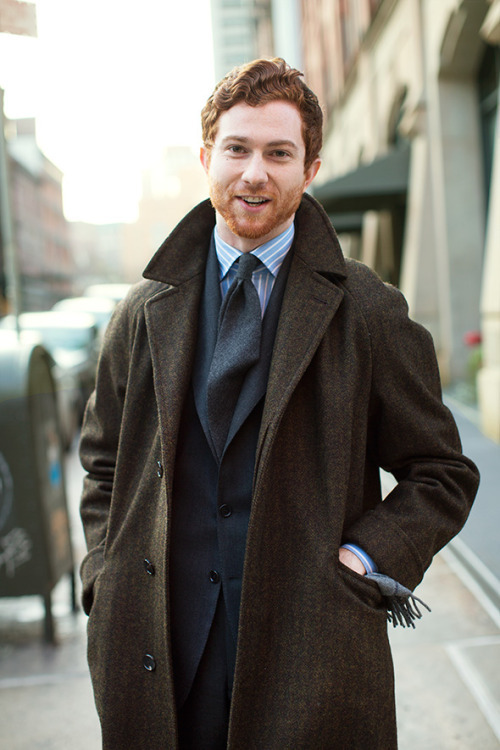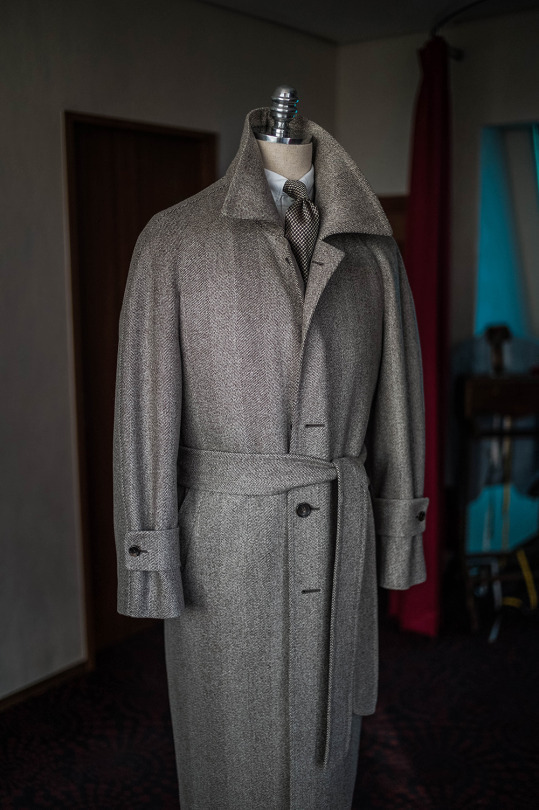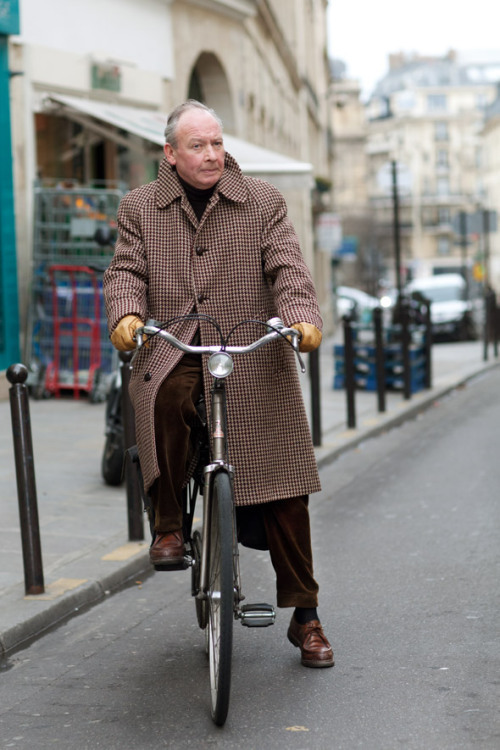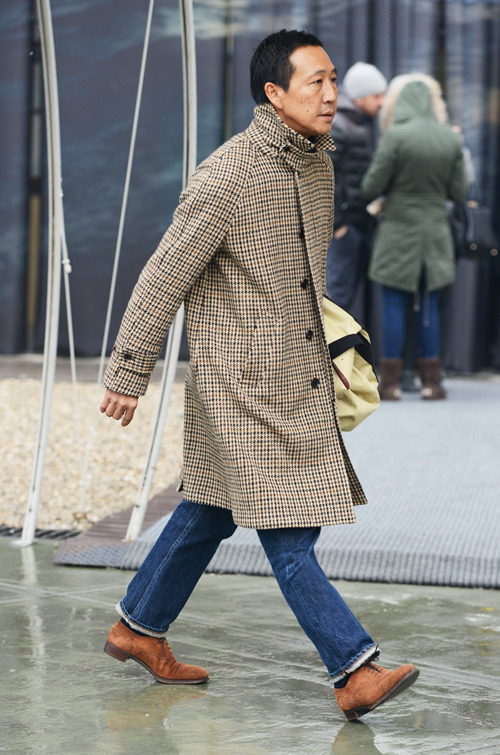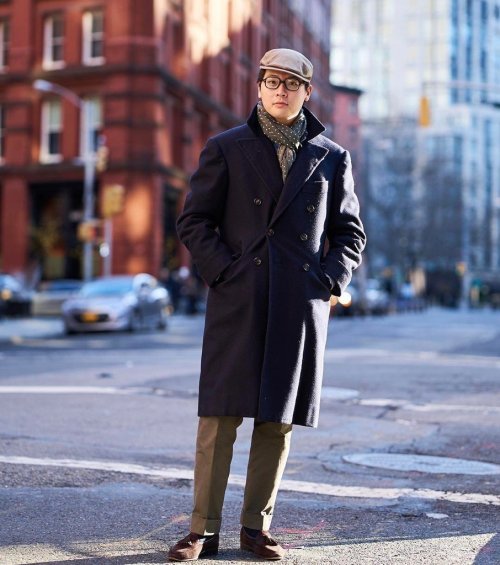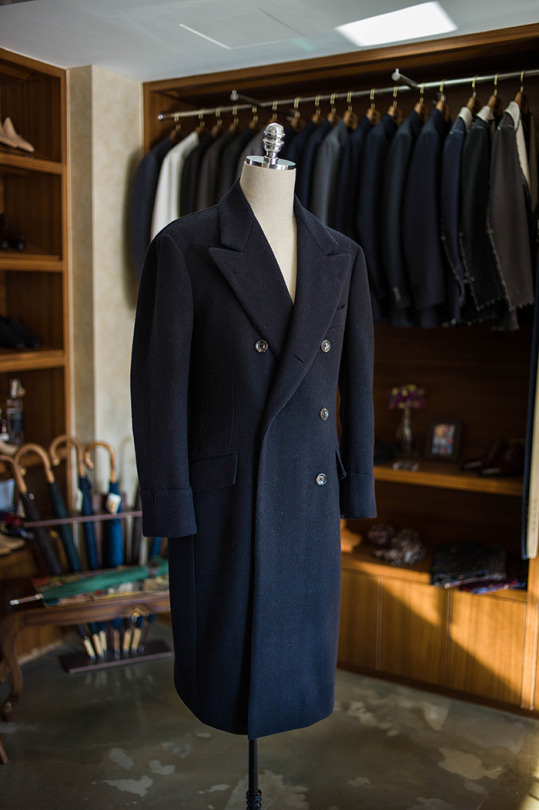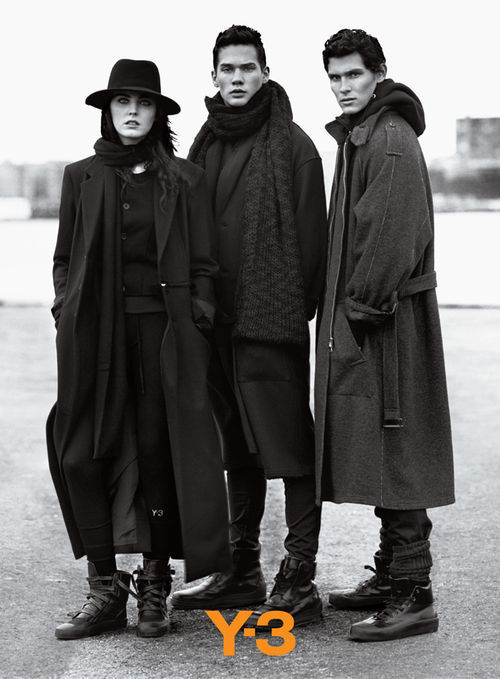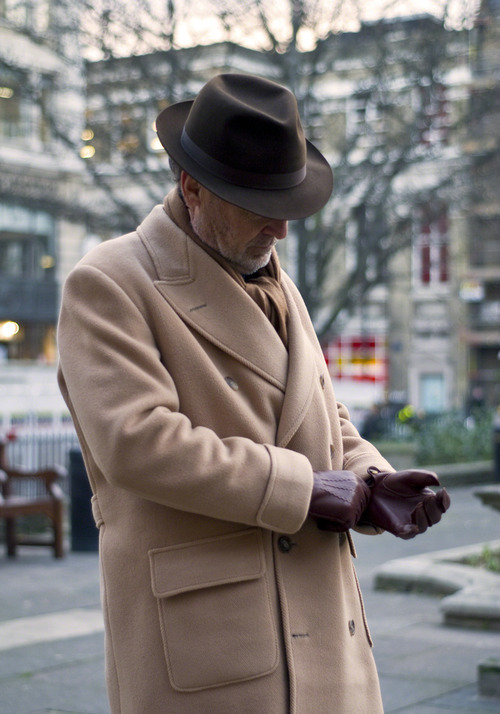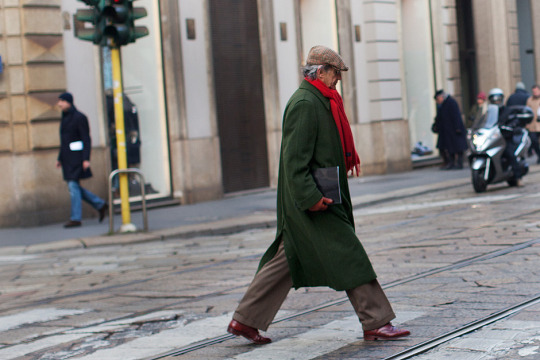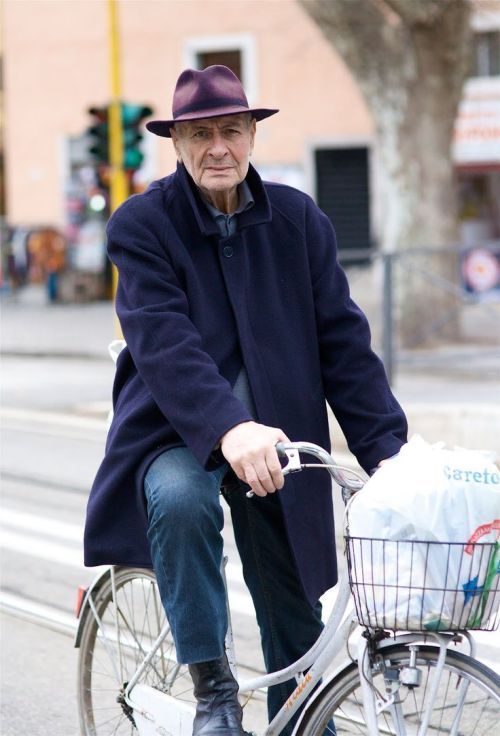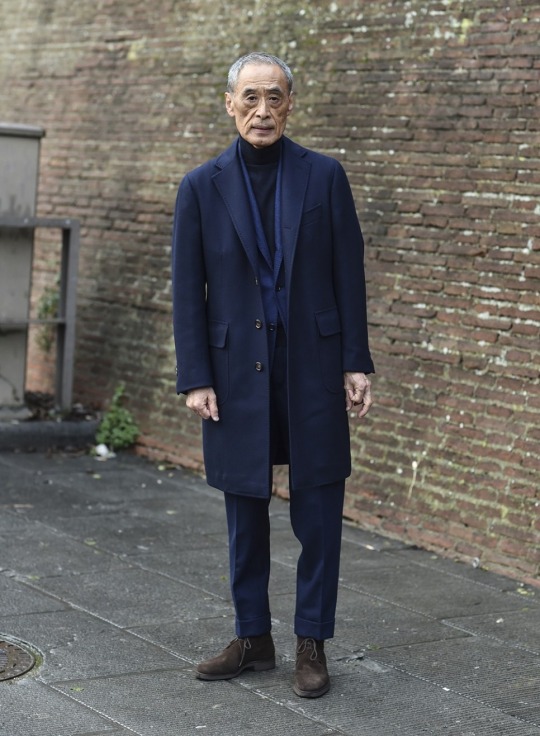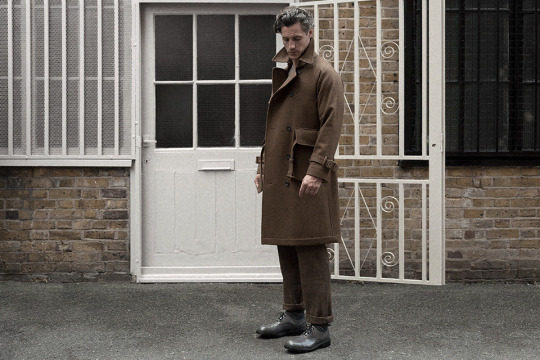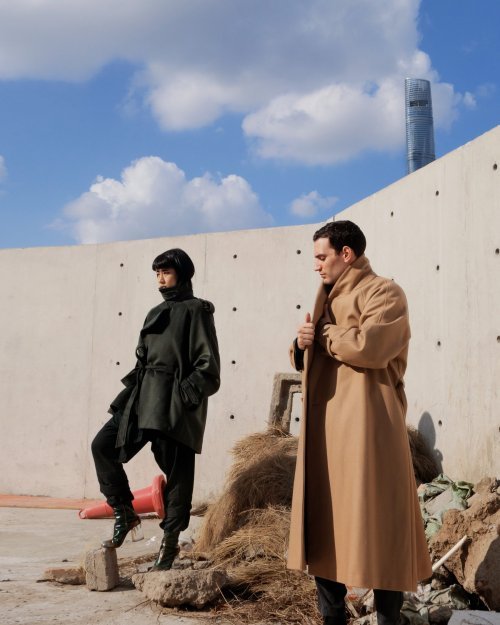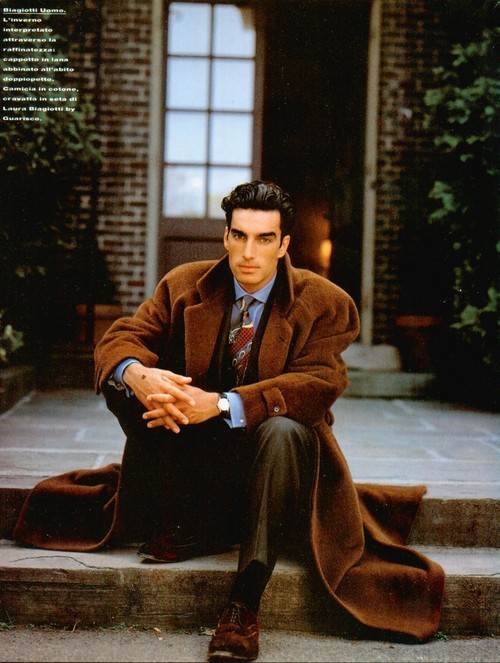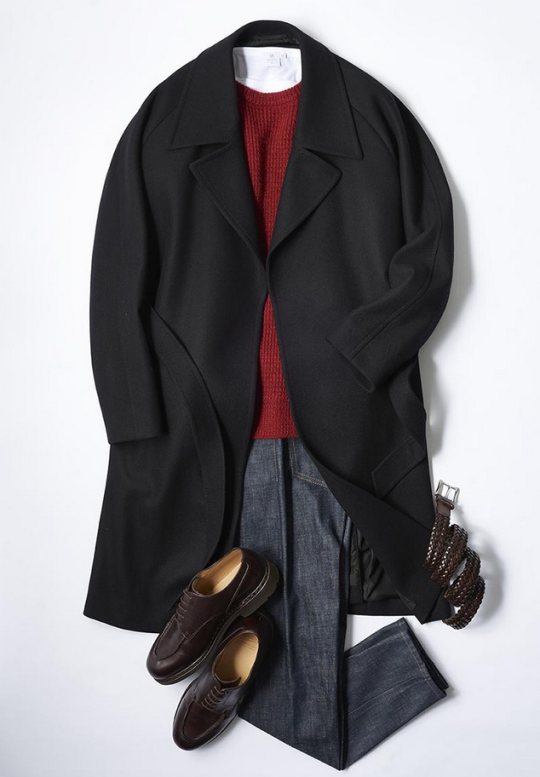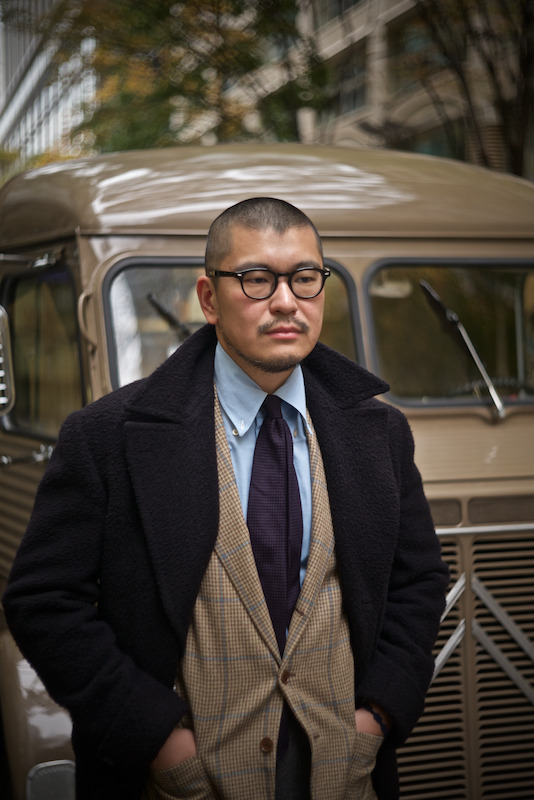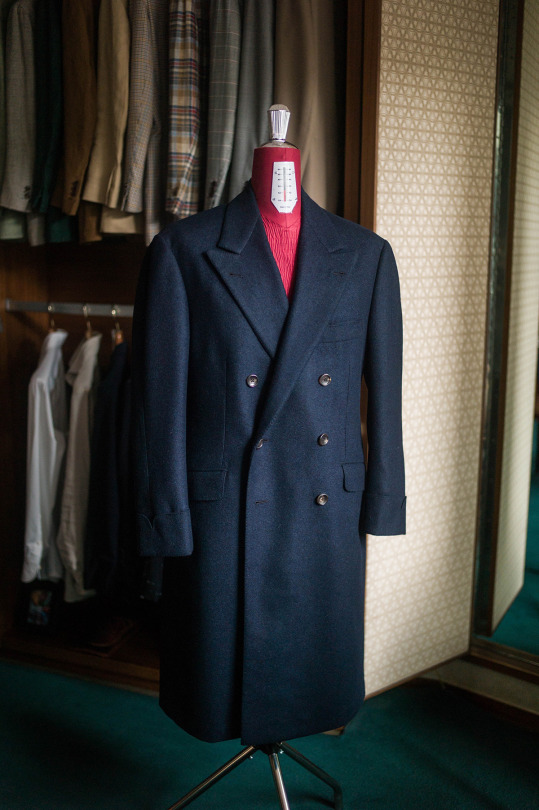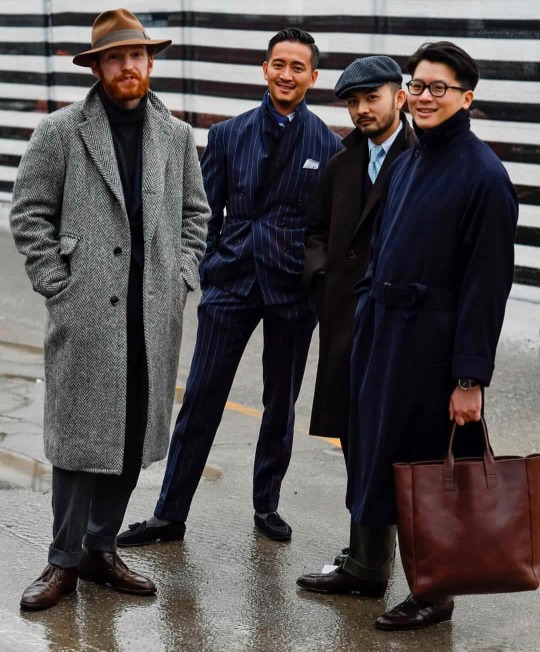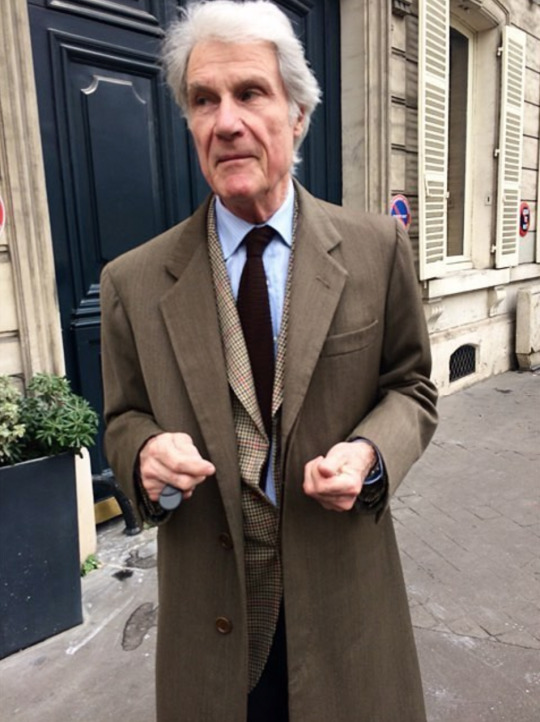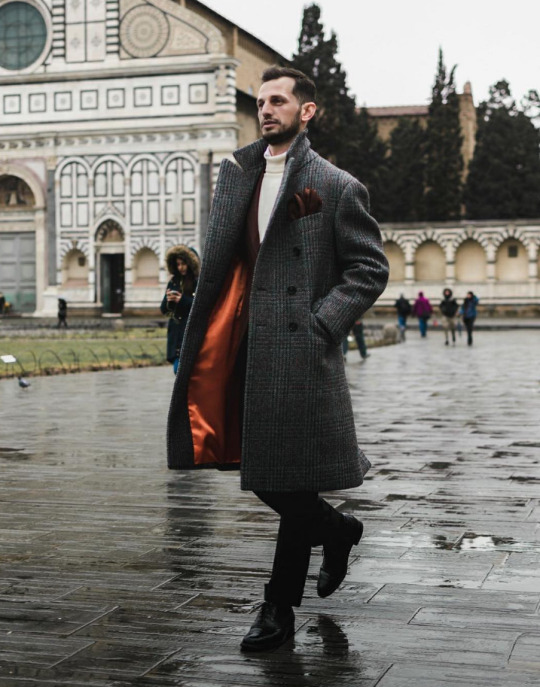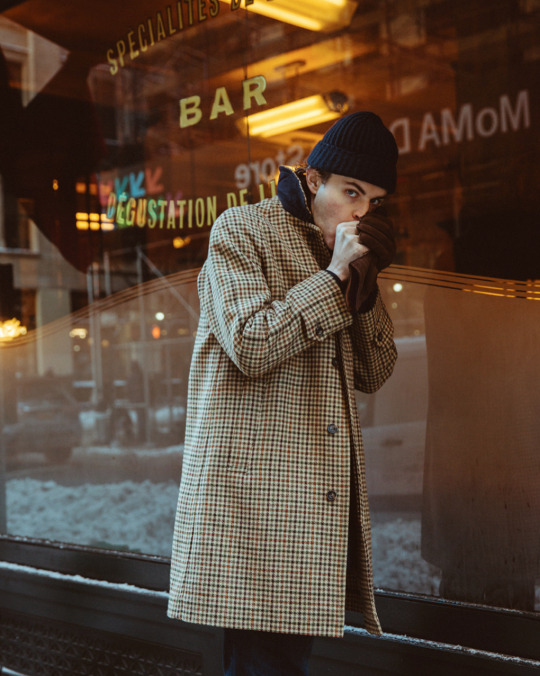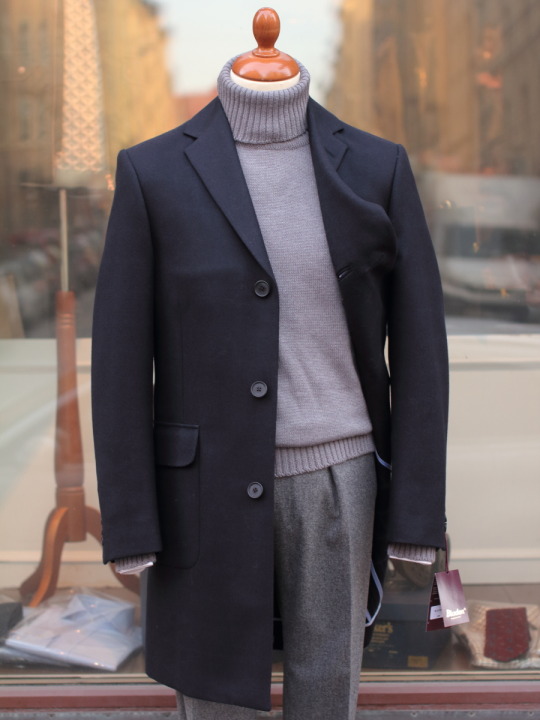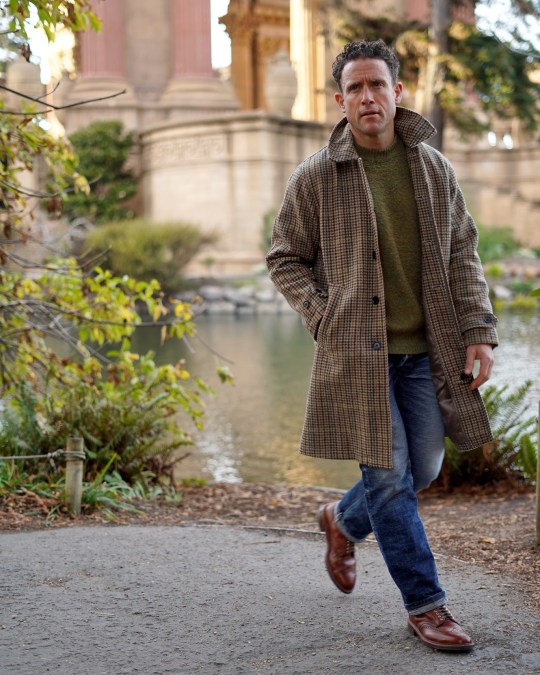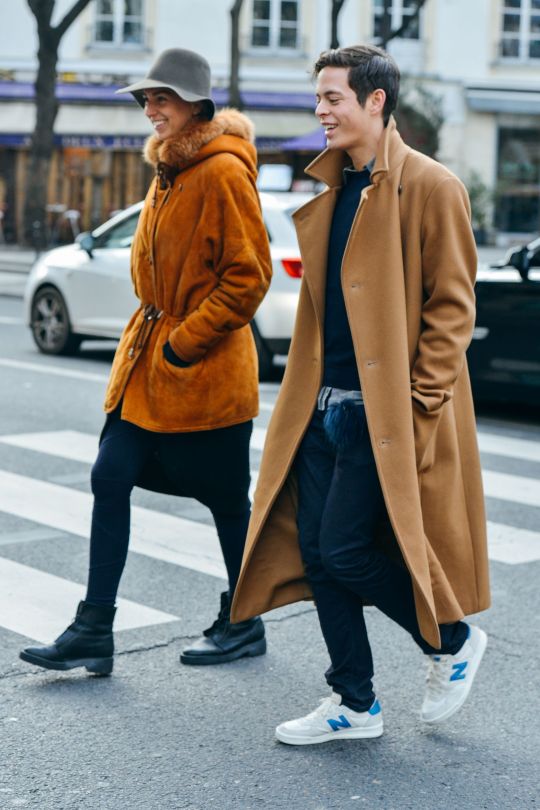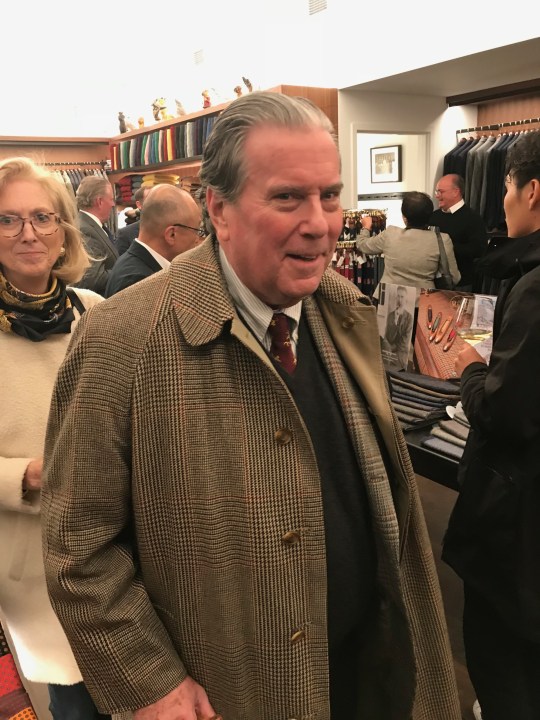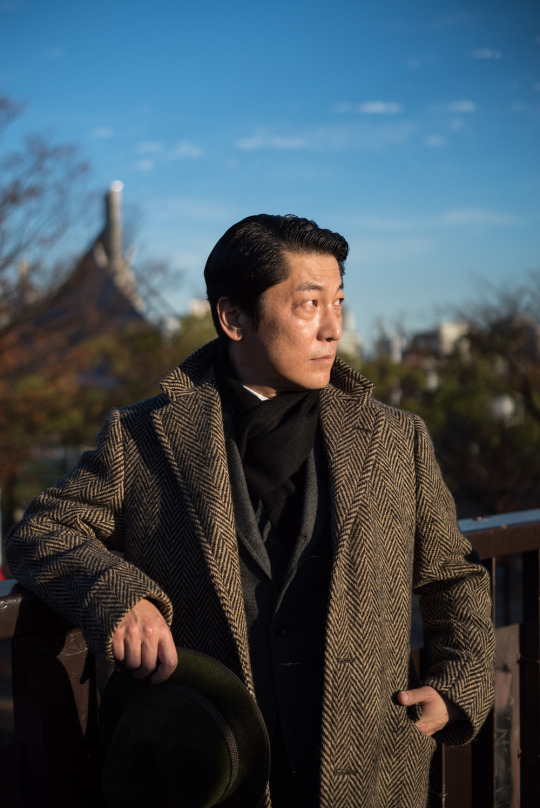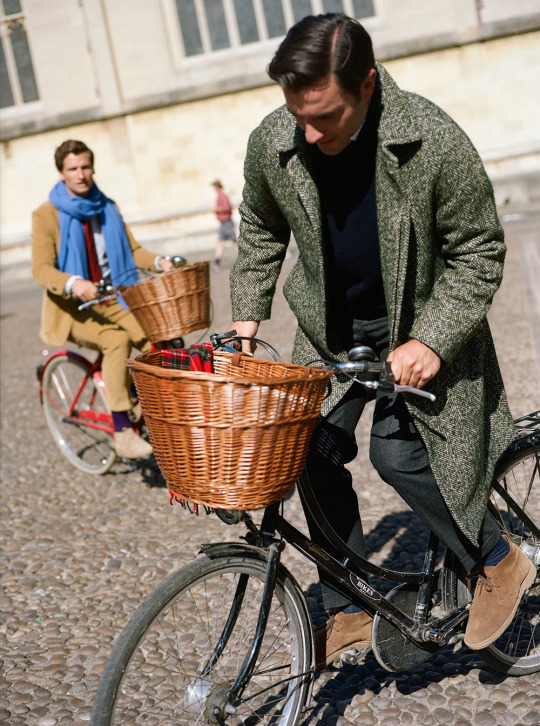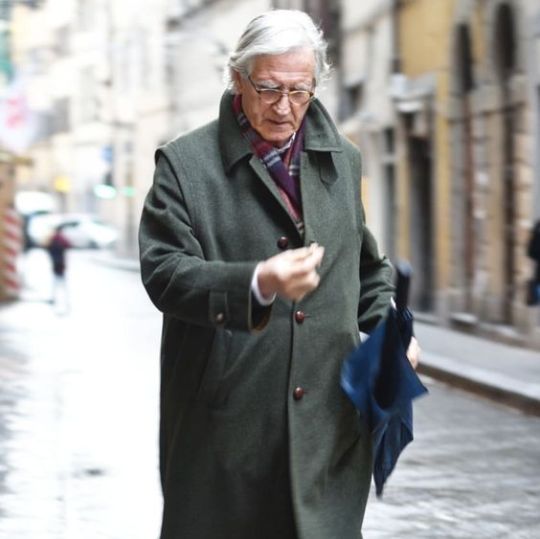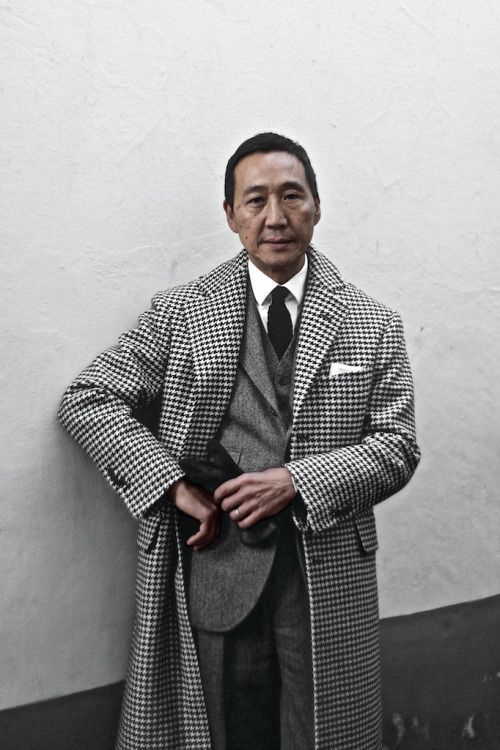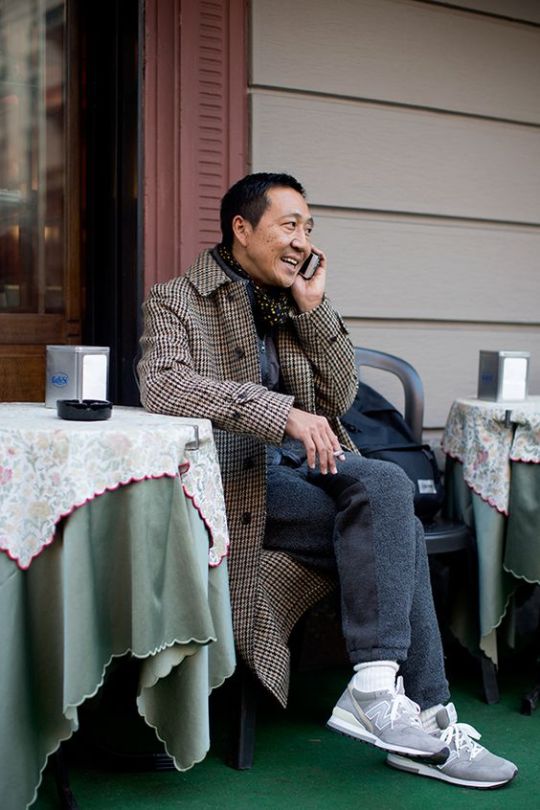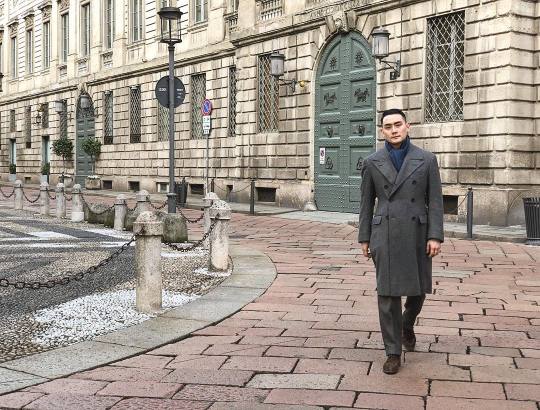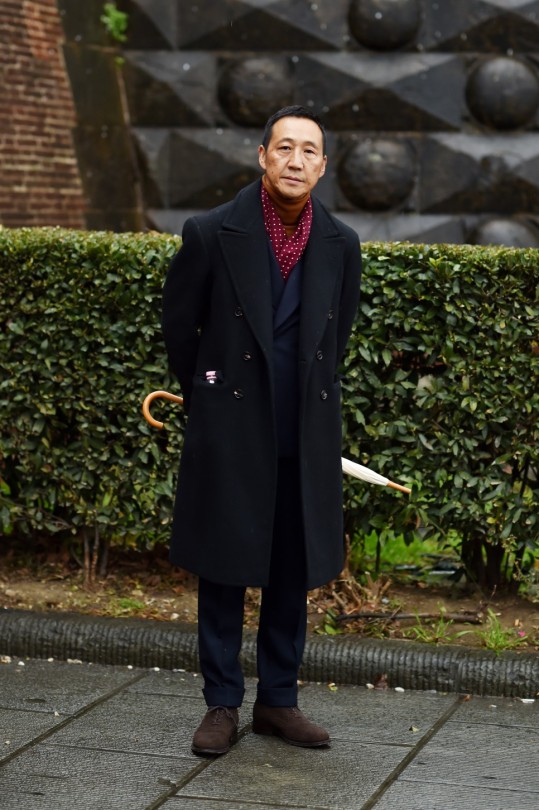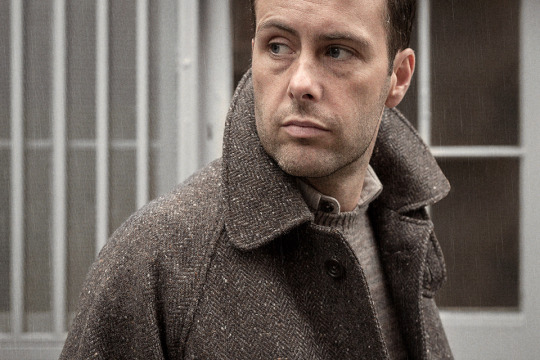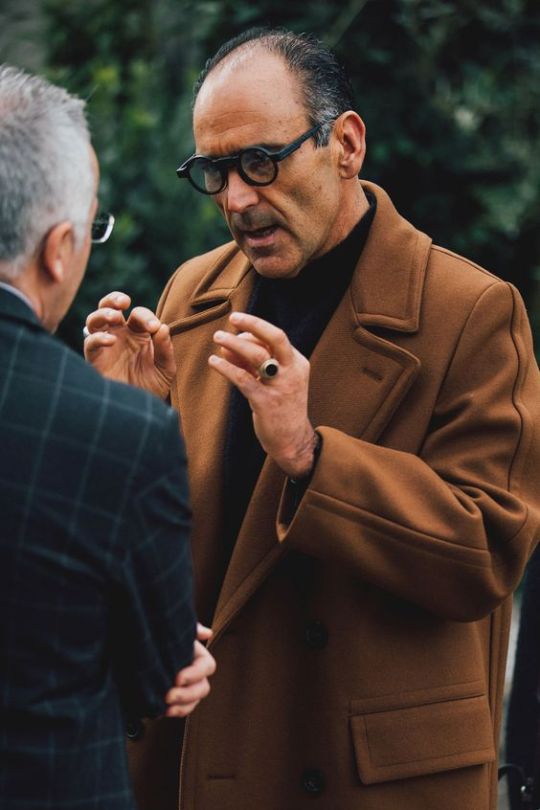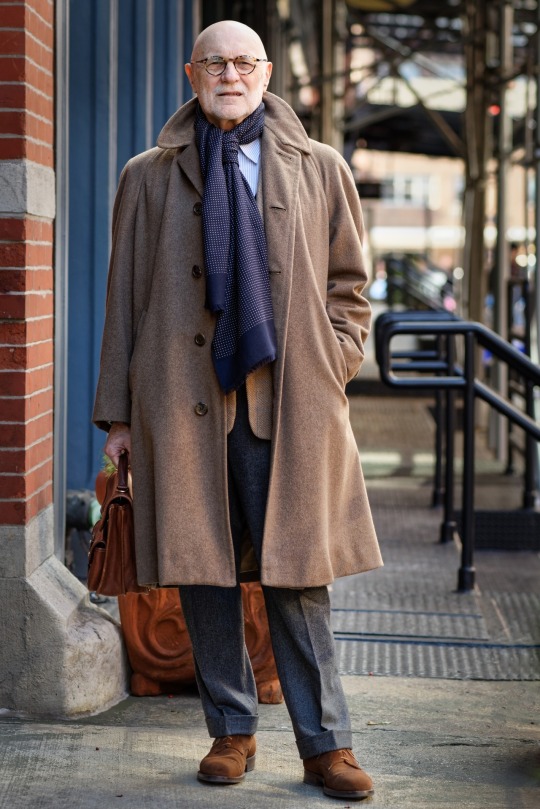
Men’s style has never been more factionalized. Whereas men once agreed on what they thought were The Good Clothes, today’s landscape is such that the ascendency of one look doesn’t necessarily displace another. Ten years ago, men rallied around Americana and denim, then prep and Italian tailoring. Now with a million style tribes, it’s hard to coalesce excitement around any one thing. There’s streetwear and techwear, tailoring and normcore, the brutalist avant-garde and Japanese folk. Nothing is fully in or out.
There is, however, one small sliver of overlap: the classical overcoat, loose and slightly oversized, which has somehow managed to cut across style genres. Preps pair polo coats with tweeds and flannels. Streetwear aficionados have worn camelhair topcoats ever since Kanye sported his with suede Chelsea boots. Contemporary menswear guys, those of both maximalist and minimalist stripe, like theirs with sleek jeans and textured sweaters. Even workwear lines such as RRL offer the occasional belted duster or tweed.
These are not just superficial overlappings, either. As men’s style has started loosening up, both fashion forward guys and classic menswear enthusiasts have found common ground on how they think a coat should fit. Whereas traditional overcoats once seemed out-of-touch, shoulder-hugging coats now look out-of-date. Classic overcoats right now are the one thing we can all agree on.
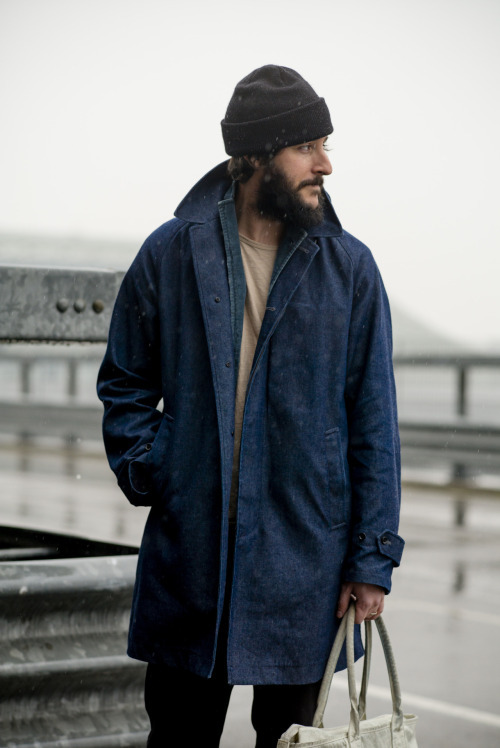
In today’s dressed down world, an overcoat can be a good way to get some of the benefits of tailored clothing without looking like you’re headed into the boardroom. They’re typically unstructured, so they don’t have the shoulder-defining look of a suit jacket, but they have face-framing revers and the general sensibility of tailoring. With a suit, a long overcoat can feel commanding and authoritative. With a chunky sweater and some jeans, they can add a touch of sophistication to an otherwise casual ensemble.
They’re also the kind of failsafe pieces that can be combined with anything – coordinated or clashing, smart or casual basics. Back when he was still designing for Eidos, Antonio Ciongoli (now of 18 East) said on a Blamo! episode that he tries to design clothes that make getting dressed in the morning a simpler task.
If we’re doing a great job, everything is doing double- or triple-duty. And that’s where I think the collection has gotten a lot better. In the beginning, it was way harder to put together. I would see guys put things together and get super bummed [laughs]. So, it’s been simplified more than anything. You just try to make things easier for guys. It should all be a no brainer – the goal is to make the collection a no brainer.
A good overcoat can be that kind of piece in your wardrobe. It’s the thing you can wear to nice parties and special dinner outings, but also be a practical piece for running errands. It folds up well and can be a travel companion. It’s classic without being fusty; contemporary without being challenging. It’s about as close as a piece of outerwear will ever get to being universally useful.
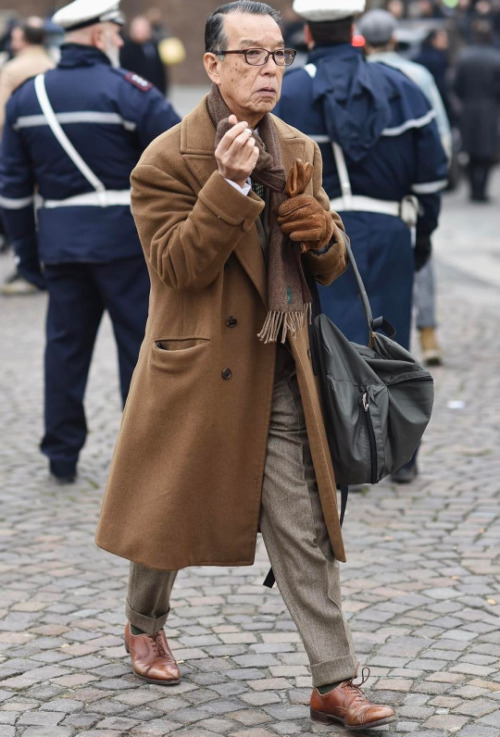
HOW TO SHOP FOR AN OVERCOAT
Unfortunately, quality overcoats are expensive. Figure that, even at wholesale prices, quality materials will run a company at least a couple of hundred dollars alone, not to mention the cost of make, delivery, and marketing. That means good overcoats will run you at least – if not more – the price of a good suit. I have some links at the end of this post to a few models I’ve been looking at this season.
The good news is that classic overcoats haven’t changed much over the years, and their sturdy construction means you can find them in thrift shops for pennies on the dollar. Years ago, I bought a Ralph Lauren guard’s coat – originally made for Wilkes Bashford – for about $75. If you’re looking to get a an overcoat this season, but aren’t trying to break the bank, you can probably find something local if you spend a few weekends hunting around thrift shops.
Some things to consider when shopping:
Silhouette: Like with all clothes, key to the overcoat is its silhouette. Some have an A-frame shape; others can be blocky. When wearing the coat, pay attention to the shape and think about what sort of silhouette you’re trying to create. Even traditionally sized, vintage pieces can look great if you contrast them against a more contemporary ensemble. Wear them with slim-tapered pants to give you outfit some shape.
Length: For decades now, most coats have ended around the middle of your thigh – what’s sometimes referred to as a car-coat length since that’s what you want if you spend a lot time getting in and out of cars. Much of the short coat trend, however, can be chalked up to the general shrinking of men’s silhouettes. As the hems on jackets and trousers have slowly crept up in the last twenty years, so have the hems of their accompanying outerwear.
Properly sized, long overcoats are coming back into favor, however, as men’s silhouettes are starting to fill out again. And I couldn’t be happier about it. They add sophistication to casual ensembles, a sense of drama when you walk, and help give you all the flattering effects that come with good tailoring. I prefer knee-length coats where possible, but they can sometimes be awkward. When you sit down on the subway, your coat’s hem suddenly feels like the massive skirt on Serena William’s wedding dress.
Sleeve Treatment: Most overcoats have set-in or raglan sleeves. The first will give you a defined shoulder line and help “T” off the top of your silhouette. Raglan sleeves, on the other hand, are rounded, relaxed, and relatively more casual. Without that defined shoulder line ending at the shoulder bone, these will show the natural curvature of your body. They may not sound flattering – and sometimes they aren’t – but on something like a Balmacaan, raglan sleeves can help hide an oversized fit. Without the sleeve seams falling off your shoulder bone, you can layer an oversized, raglan-sleeved topcoat over almost anything without someone easily noticing the fit is roomy.

Balance: In tailoring, balance refers to how a coat hangs off your shoulders. The most important aspect is what’s known as the “front-back balance,” which is the relation of the front of your hem to the back. You want to think of this like a finely tuned measuring scale. When viewed from the side, the front of your hem should be even or slightly lower than the back. If it rides up, the coat simply doesn’t fit and it’ll be expensive to alter. Ignore this and the coat won’t hang properly. Balance is especially important for overcoats since small distortions can become glaringly obvious. If the coat is swinging just one degree inward, the effect will look exaggerated on a long garment.
Material: Tailors typically demarcate topcoating from overcoating at around 22oz. Topcoats are lighter garments designed to be worn in the autumn and spring. They can be as light as 15oz, which is heavy tweed sport coat territory. Overcoating starts at 22oz. That difference adds about a pound or two of extra weight to the resulting garment, but it also adds a lot more warmth.
Stiffer and heavier fabrics can also give you a really nice silhouette. Lighter and softer materials may hang more like a tube, but they can move in really beautiful and dramatic ways. Pay attention to how the material hangs and moves when you put on the coat. If you try on enough coats across a range of makes, you’ll get an appreciation for how different coats can feel and look.
Collar: Not all collars can be worn up – a lot depends on the material and cut – but see how a coat looks when you pop the collar from the back. Doing so can be a nice way to help frame your face. Sometimes a coat can look boring when worn one way, but come into its own when you adjust this detail.
Single Open, Double Closed: Some coats simply look better when worn open. If you’re live in a really cold environment, and think you’ll often fasten your jacket, check out how it looks both ways. Generally speaking, I find single breasted jackets look better worn open, double breasted jackets are better closed. Obviously, if it’s frigid out, you should fasten whatever you’re wearing. There’s practical dimension here that’s just plain common sense, but it’s good to be aware of how the coat is best styled.
Alterations and Repairs: If you’re shopping second-hand, know what can be easily altered and repaired. Depending on the coat’s design, you can shorten the length, nip the waist, and adjust the sleeves without too much trouble. If you plan to wear this over a suit jacket or sport coat, make sure there’s enough room in the chest and shoulders to accommodate for one – those areas aren’t easily let out. If you see moth holes, those can be rewoven in a way so that you don’t notice the repair, but skilled work can be expensive. If your heart is set on something, companies such as at The French American Reweaving Company, Without a Trace, and Best Weaving & Mending are known for their quality repair work.
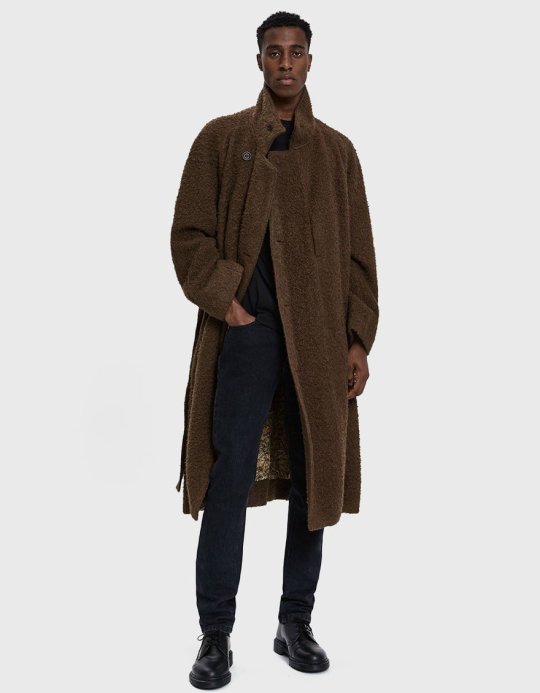
OPTIONS THIS SEASON
The good news is that there are a million options this season for overcoats. The bad news is that the styles are fluid and not easily pegged. Traditionalists will want to stick to classic clothiers, but guys who favor more contemporary styles will find even a classic coat can be styled in a modern way. That means it’s not easy to carve up this list into aesthetics – you should browse far and wide, and just see what works for you.
On the very classic end, I like shops such as O’Connell’s and Ben Silver for traditional models. Ralph Lauren also has a signature polo coat distinguishable through its quirky, flapped chest pocket. Ring Jacket, Coherence, and Chrysalis have other worthwhile classic styles. Chrysalis’ handsome tweedy creations are made from the very best natural fibers woven in the British Isles. They’re a bit fusty in that British countrywear way, but look great with flannel trousers and suede brogues.
For something slightly more casual and modern, check Todd Snyder, LodenTal, Private White VC, Officine Generale, and AMI. French label De Bonne Facture has wonderfully roomy, double-breasted overcoats with belted closures this season (those are currently offered at The Rake, a new sponsor on this site). Eidos is also particularly good for this sort of thing. Antonio Ciongoli recently left his position as the company’s Creative Director, but No Man Walks Alone (another sponsor here) has his final collection. His topcoats tick all the right boxes: easy to wear, reasonably classic, and perfectly casual.
In addition, Berg & Berg recently introduced a new line of sub-$1000 topcoats made from top-end Fox and Harris Tweed materials. I like how they come down past the knees, are comfortably cut, and made from heavier fabrics that promise to drape well.

Among classic-contemporary models, my favorite is Kaptain Sunshine’s Traveler, which has a roomy, A-frame silhouette, generous collar, and fun details such as equestrian leg straps and a patched ticket pocket. It’s the kind of thing you can easily wear with slim jeans and a textured sweater, which are the sort of combinations you can actually rely on in the morning without too much fussing. Drake’s spongy, tweedy raglan-sleeved coat this season also looks promising in that respect.
For something a bit more contemporary still, Maison Margiela has a felted houndstooth coat that’s been made with a rope belt (I’d personally wear it without the rope, but then it’ll look just like any other classic piece). Eastlogue has a gray checked Balmacaan that would look great with a minimalist wardrobe. And finally, the pièce de résistance, master stroke, and crown jewel of contemporary casual coats this season is Lemaire’s fuzzy, alpaca-blend double-breasted. However, it costs a staggering $5,200, which means if you’re too poor to afford such as thing, like me, you can right-click-kop the .jpegs.
Finally, for budget-friendly options that don’t require you to push through the musty racks at Goodwill, Robert W. Stolz has some traditional Loden coats for the price of a single Lemaire sleeve. The styling on their website is a bit too traditional for my taste, but you can imagine wearing it in more contemporary ways. Similarly, John Crocket has a promising raglan sleeved coat built from Magee herringbone tweed and an insulating, padded lining. The length comes down past the knees, but you can get it shortened at the tailor. Abercrombie & Fitch also has something they call their A&F dad coat (making it “dad coat AF”). The brown checked one is surprisingly made from the same Abraham Moon tweed I’ve gotten from one of my tailors, Anderson & Sheppard, yet it only costs $250. Ian at From Squalor to Baller has positive things to say about the model. With J. Crew’s usual coupon codes, this gray tweed topcoat may also be worth a look.


